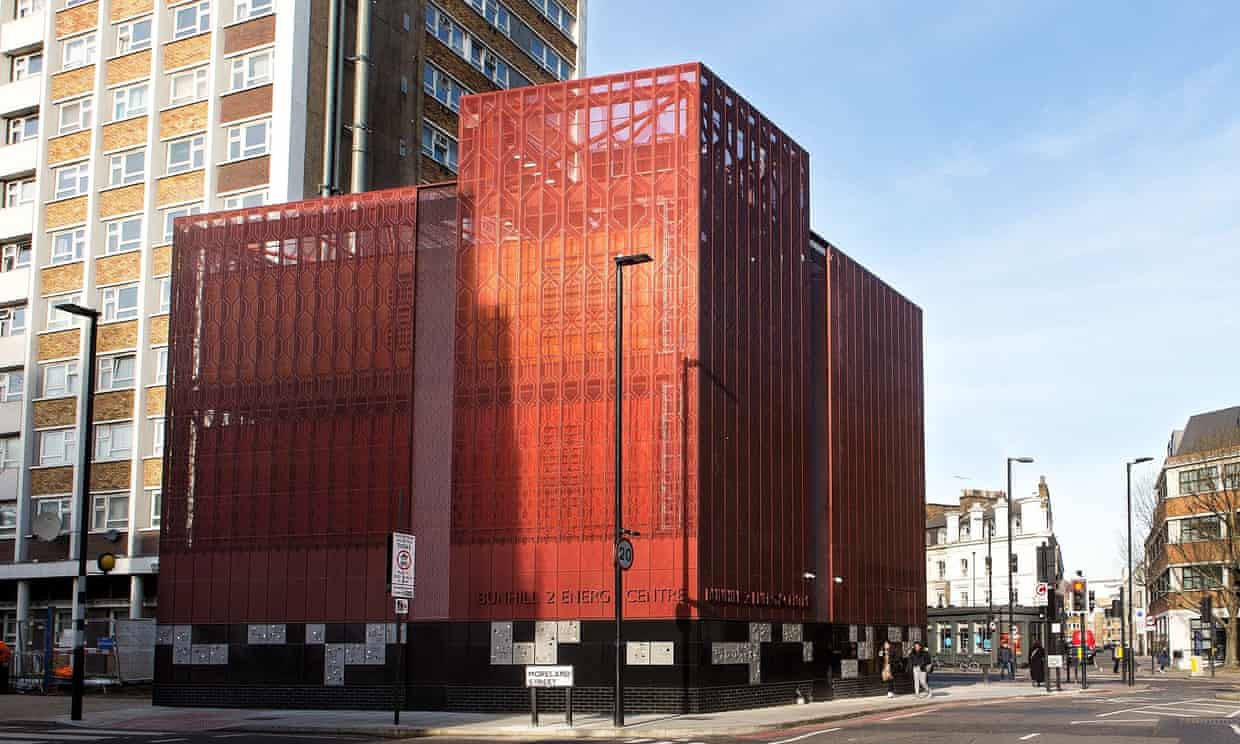According to advice from the mayor of London, funds acquired from carbon offset initiatives by developers should primarily be allocated to projects focusing on energy efficiency, renewable energy, and district heating. However, some councils express concerns that the funding they obtain is frequently inadequate for financing such initiatives.
On the other hand, some councils have successfully addressed this challenge by leveraging their carbon offset funds alongside additional financial resources to undertake significant projects. A particularly notable instance is Islington council’s award-winning Bunhill heat and power network in north London, which has benefited from over £5 million in offset financing.
This project claims to be the world’s first to capture warm air from underground train systems and convert it into affordable, eco-friendly energy. Launched in 2012, it provides reduced-cost, greener energy to 800 homes in estates surrounding Old Street. The Bunhill 2 extension, inaugurated in 2020, is located in a repurposed London Underground station situated between Angel and Old Street. This extension harnesses warm air from the Northern line tunnels to heat water, which is then circulated to 1,350 homes, a school, and two leisure centers, effectively lowering energy costs and providing low-carbon heating solutions. Furthermore, it generates sustainable electricity that is redirected back into the underground system and a nearby residential tower, energizing shared lighting and elevators.
Rowena Champion, Islington council’s lead on environmental issues, described it as an “excellent example of intelligent, eco-conscious planning.” She stated, “We are effectively utilizing heat that would otherwise be wasted to warm residents’ homes. This results in reduced energy expenses for residents and lower pollution levels, which is crucial as the cost of living rises.”
Ealing council is similarly allocating its carbon offset funds to reduce emissions from its leisure centers. An £800,000 grant has enabled the replacement of conventional gas boilers with air-source and water-source heat pumps across three facilities in the area.
Other local authorities are directing their carbon offset resources toward retrofitting initiatives in council housing, supported living, and community facilities. Several councils are also distributing a portion of these funds for other initiatives. Guidance indicates that while projects yielding “less obvious carbon reductions” can receive funding, they should not command the majority of the budget.
Since its inception in 2022, Hackney’s community energy fund has garnered just over £1 million in carbon offset funding. These resources have facilitated the installation of solar panels in schools, faith organizations, and charities, along with the implementation of educational programs.
Additionally, it has bolstered projects such as the east London council’s microgrid initiative, the first of its kind in the UK, which empowers council housing tenants to purchase subsidized energy directly generated from solar panels on their buildings through a localized electricity grid. Traditionally, solar panels on apartment blocks could only supply power to the grid or common areas. Currently, around 4,000 solar panels are being installed across 28 blocks within three estates, allowing approximately 800 households to participate in the scheme, which is expected to produce about 1MW of electricity, meeting about a fifth of the blocks’ energy requirements.
Caroline Woodley, the mayor of Hackney, remarked that “The carbon offset fund has been instrumental in enabling our communities to engage in significant climate action. It has provided the means to educate children in schools about energy and the environment, assist faith groups in enhancing their buildings’ warmth and efficiency, and equip charities with resources to simultaneously reduce costs and carbon footprints.”
Kensington and Chelsea council is allocating all of its carbon offset funding, including unspent amounts, to undertake extensive retrofit projects at local schools and social housing estates. A representative noted that some schools in the borough are over 140 years old and operate with poor energy efficiency, contributing nearly 10% of the council’s greenhouse gas emissions, prompting plans to retrofit all such facilities.
This initiative will involve decarbonizing heating systems by substituting gas boilers with heat pumps, replacing failing heating distribution pipes, and installing new windows and radiators.

